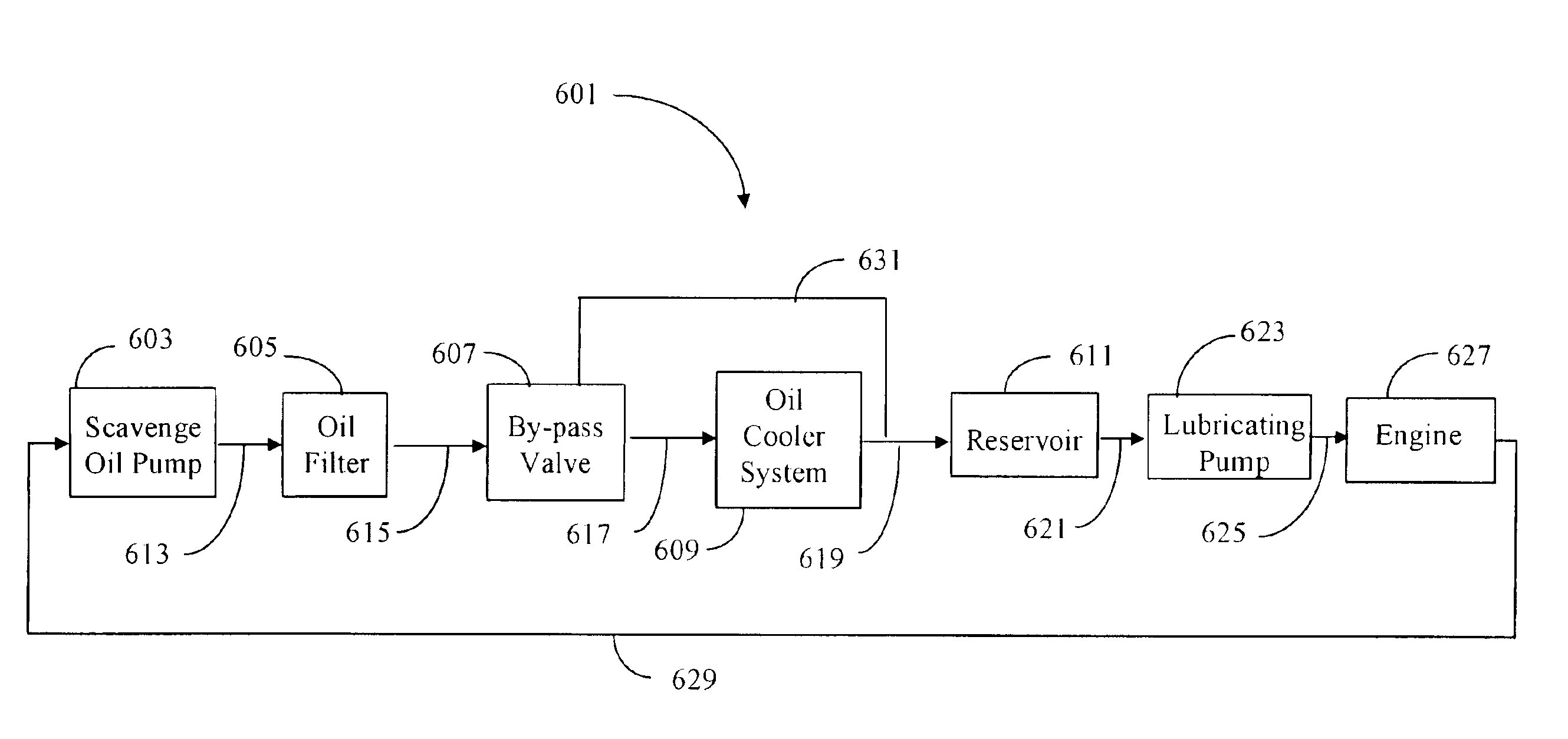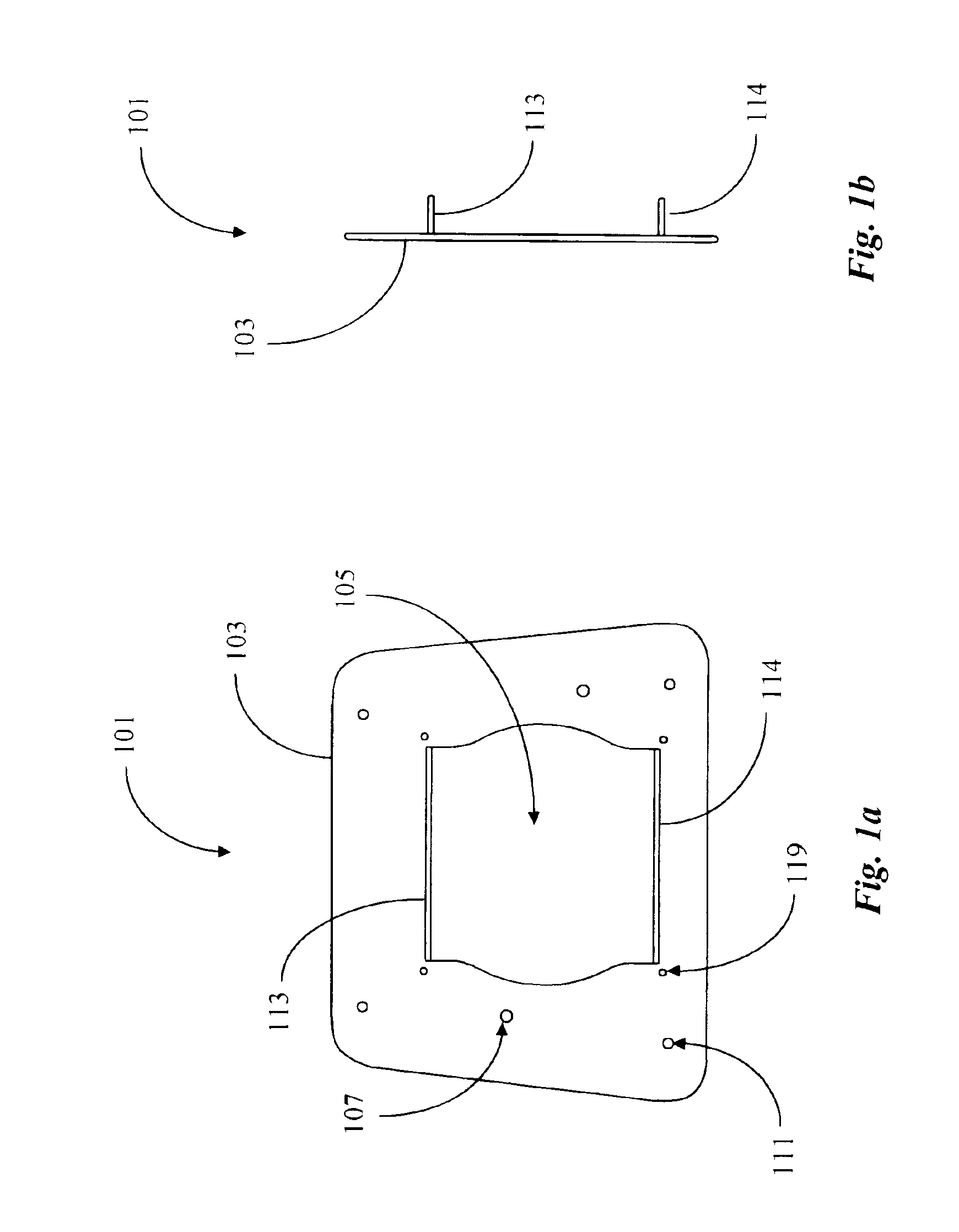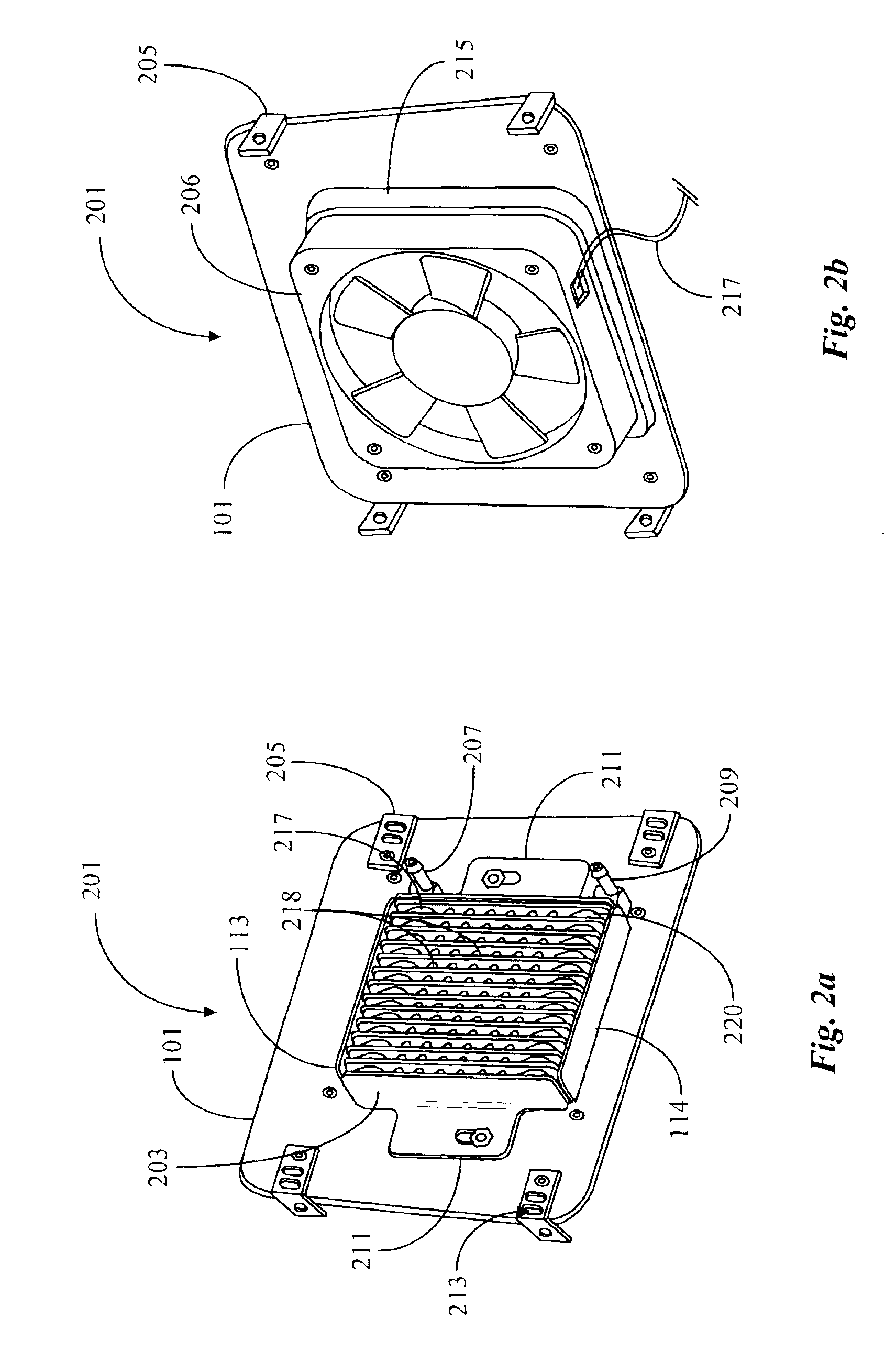Method and apparatus for efficiently cooling motorcycle engines
a technology for cooling motorcycle engines and cooling chambers, applied in the field of motorcycling, can solve the problems of shortening the life of the engine, accelerating the friction and wear of the engine components, and not easily flowing through the small oil passages within the engine block
- Summary
- Abstract
- Description
- Claims
- Application Information
AI Technical Summary
Benefits of technology
Problems solved by technology
Method used
Image
Examples
Embodiment Construction
[0031]Referring now to FIG. 1a, the inventor first illustrates a mounting plate 101 provided for mounting an improved oil cooling unit to the front of a motorcycle. Plate 101 is in this example roughly trapezoidal in shape, the nonparallel sides extending upward from the bottom edge to form a smaller upper edge, and has four rounded corners. Plate 101 is designed for mounting to the front frame members of a motorcycle frame, particularly a pair of down tubes at the front of the frame, and the non-parallel sides are accordingly angled to align approximately with the angle between the pair of down tubes of the motorcycle frame. Since such an angle may vary from motorcycle model to model, and it is desirable for the edges of the plate to align with the edges of the frame when the plate is attached to the frame, the angle of the non-parallel sides of plate 101 may vary accordingly in alternative embodiments, and is therefore not particularly important in the scope and spirit of the pres...
PUM
 Login to View More
Login to View More Abstract
Description
Claims
Application Information
 Login to View More
Login to View More - R&D
- Intellectual Property
- Life Sciences
- Materials
- Tech Scout
- Unparalleled Data Quality
- Higher Quality Content
- 60% Fewer Hallucinations
Browse by: Latest US Patents, China's latest patents, Technical Efficacy Thesaurus, Application Domain, Technology Topic, Popular Technical Reports.
© 2025 PatSnap. All rights reserved.Legal|Privacy policy|Modern Slavery Act Transparency Statement|Sitemap|About US| Contact US: help@patsnap.com



